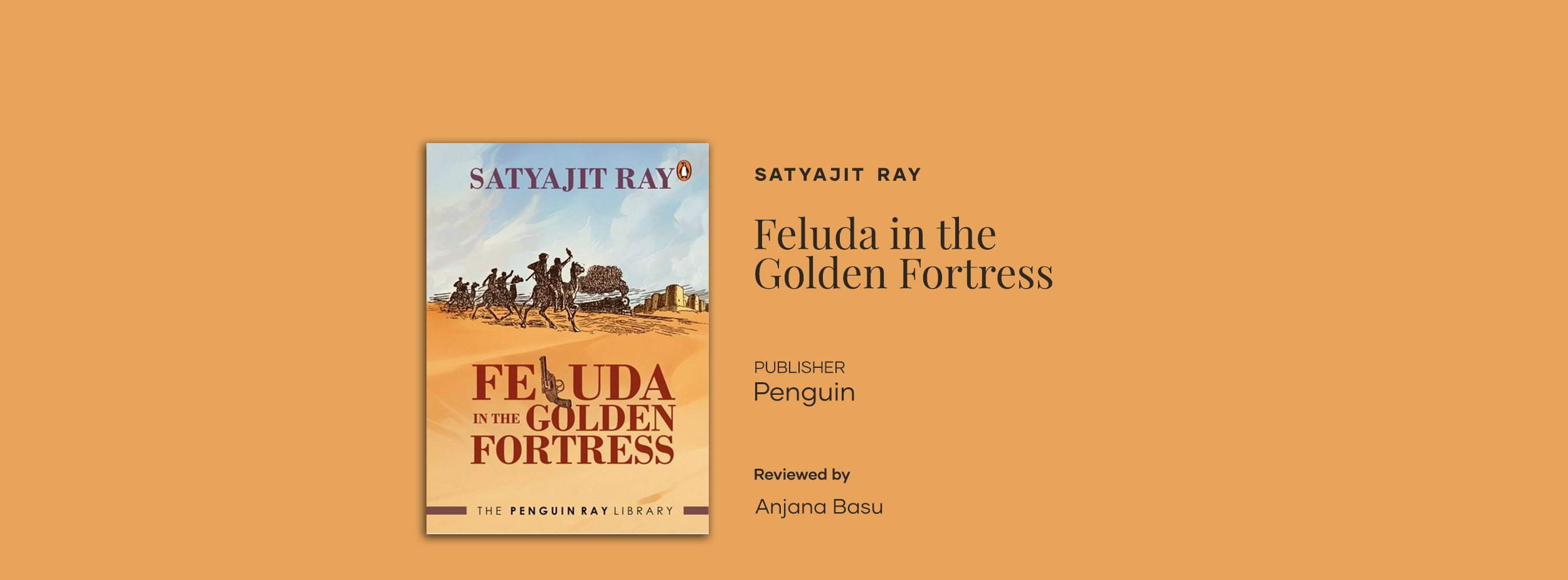

This is yet another in the series from the collection of Satyajit Ray’s works that Penguin is publishing with inputs from Sandip Ray. Sonar Kella was an award winning film for children and the first of Ray’s Feluda adventures to be filmed. Apart from Soumitra Chatterjee as Feluda it also introduced Santosh Dutta as Lalmohan Ganguly to audiences as the remarkably bad, but very lovable Bengali thriller writer. The story is packed with adventure in the desert, not to mention a child who can recall his past life, a parapsychologist, two greedy gun toting goons and an exotic location.
Sonar Kella, one of Satyajit Ray’s most beloved children’s films, has now reached its golden milestone of 50 years. To celebrate this iconic masterpiece, and provide readers with a rich context for its creation, this special edition includes Gopa Majumdar’s English translation of Sonar Kella. This version, which is entitled Feluda in the Golden Fortress to set it apart from the Sonar Kella story, is enhanced with a collection of rare and unpublished materials, offering an illuminating glimpse into the workings of Ray’s mind,
The book features rare stills from the film and a selection of illustrations taken directly from Ray’s personal journal, showcasing his meticulous attention to detail and his flair for visual storytelling. These elements not only bring the story alive, but also offer readers a behind-the-scenes look at the process of adapting the original tale for cinema audiences.
Adding depth to this anniversary edition are a series of insightful essays, including one by Ray himself, where he vividly recounts the challenges and ingenuity involved in filming the now-legendary scene of camels chasing a train. These essays delve into the technical and creative brilliance that shaped the film, offering readers a chance to understand Ray’s innovative filmmaking techniques. There is also an excerpt from an interview by John Hughes that explores the reasons behind the making of Sonar Kella to diffuse the seriousness after Ashani Shanket and Truffaut influences in the treatment of the goons.
The book also features an indepth account by Soumitra Chatterjee, the actor who brought Feluda to life. Chatterjee shares his memories of working on the film, vividly describing how he merged the book Feluda with the film Feluda, the adventurous spirit of the shoot and the fact that Ray very often controlled his greed for a beautifully taken shot editing it out for the sake of the final film.
While non-Bengali children will delight in discovering the English version of Sonar Kella and following Feluda’s thrilling escapades, Feluda in the Golden Fortress is much more than a translation. It is a collector’s treasure, part of the Penguin Ray Library — a keepsake for movie enthusiasts, Feluda fans and connoisseurs of Ray’s cinematic legacy. Offering rare insights into the making of the film and serving as a valuable resource for understanding Ray’s work, this book is a fitting tribute to a masterpiece that continues to capture imaginations, half a century later.
